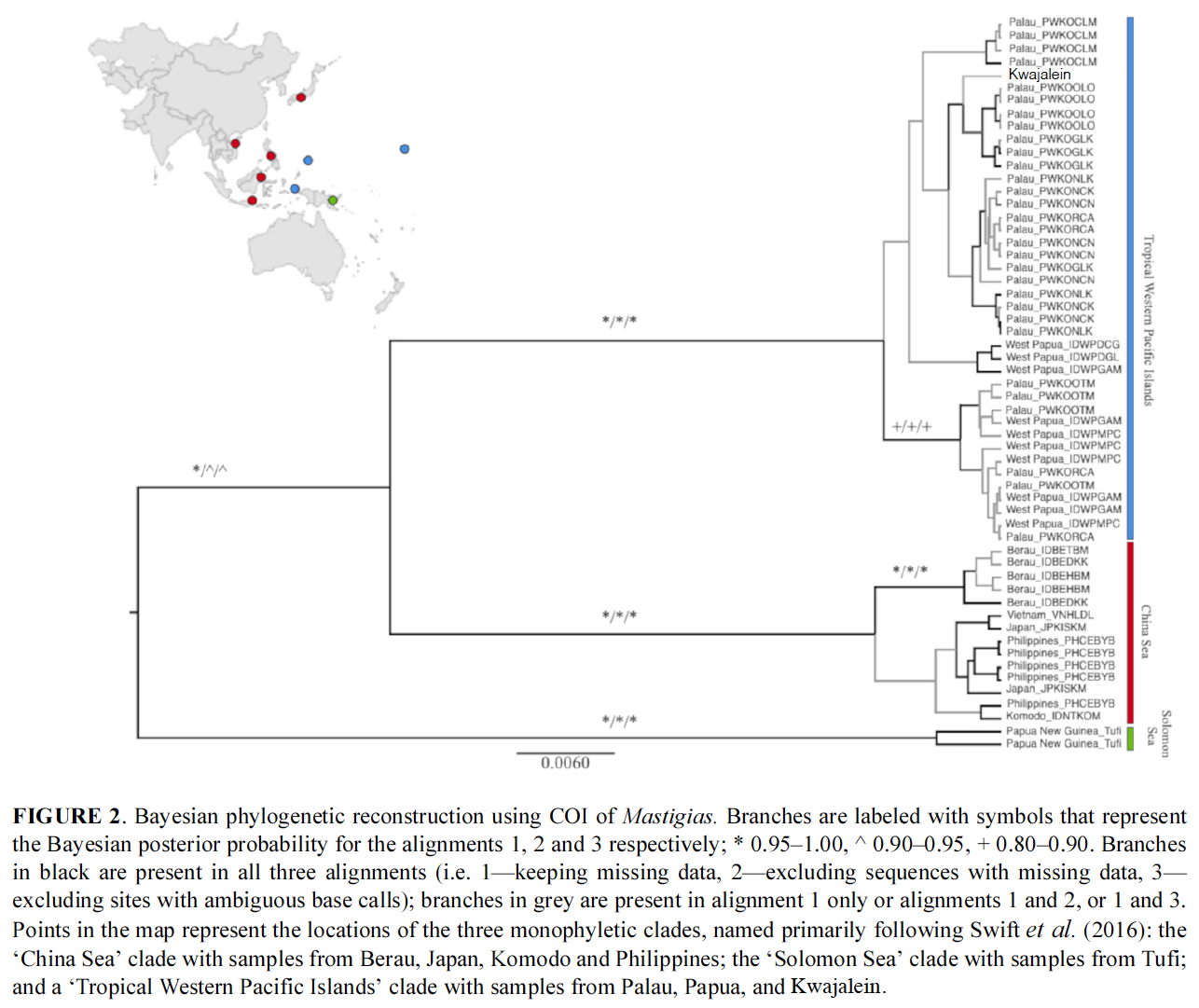
Mastigias medusae — also known as the ‘golden jelly’ or ‘spotted jellyfish’ — is a common denizen of coastal environments throughout the tropical Indian and Pacific oceans. It has captured the attention of ecologists, evolutionary biologists, and the general public because of several intriguing populations in Palau — it is the common-namesake of Ongeim’l Tketau, also known as ‘Jellyfish Lake’, where the medusae can occur in exceptionally high abundances, and show notable differentiation among populations in patterns of diurnal horizontal migration, morphological variation, and population dynamics. Mastigias papua is the type species, one of eight species described in the genus; molecular analyses evince at least three species (Rocha de Souza & Dawson 2018).
Understanding genetic variation among populations and better delimiting species diversity in Mastigias has become a priority because of its growing relevance in studies of boom-bust dynamics related to environmental change, cryptic species, local adaptation, parallel evolution, peripatric speciation, and understanding the dynamics of pelagic symbioses.

Rocha de Souza, M. & M.N Dawson. 2018. Redescription of Mastigias papua (Scyphozoa, Rhizostomeae) with designation of a neotype and recognition of two additional species. Zootaxa 4457:520–536. Correction 4457:600.
